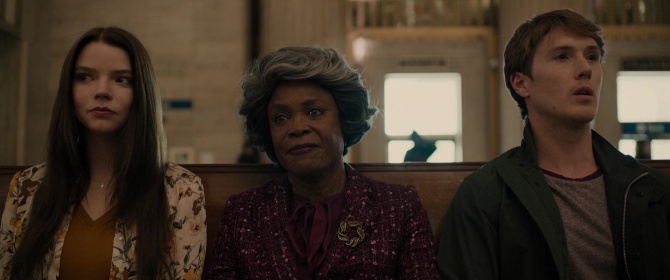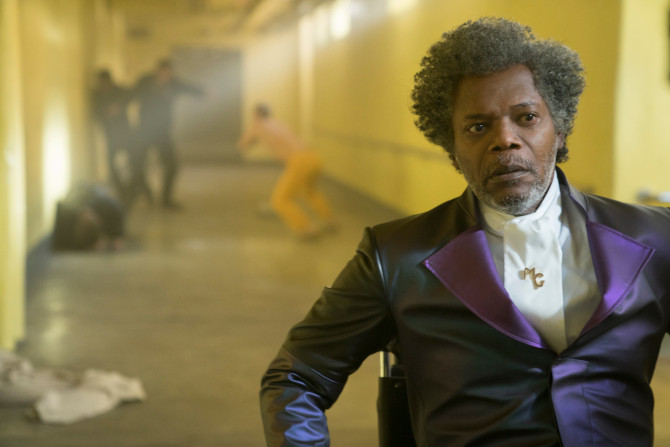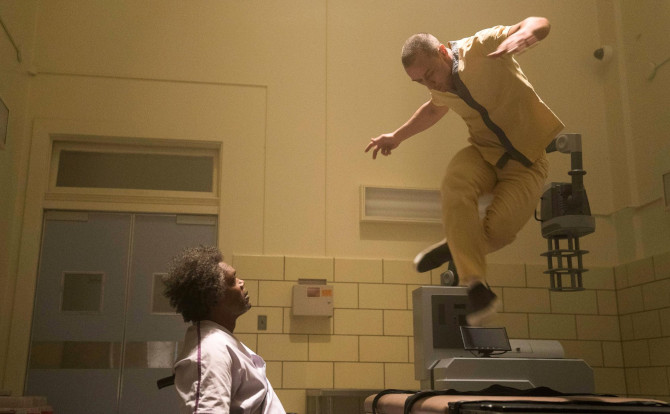 Let’s face it, M. Night Shyamalan’s Glass (2019) was always going to find itself in a precarious position. Following arguably his second most lauded film, 2000’s Unbreakable, and the unexpected hit sequel to it, 2016’s Split, the movie could be considered as fragile as the title itself.
Let’s face it, M. Night Shyamalan’s Glass (2019) was always going to find itself in a precarious position. Following arguably his second most lauded film, 2000’s Unbreakable, and the unexpected hit sequel to it, 2016’s Split, the movie could be considered as fragile as the title itself.
For the most part panned by critics, yet more respected by its audience, over the past two or so years, it has become one of those love it or hate it type of features. And perhaps rightfully so, for it highlights both the best and worst of what Shyamalan has offered us over his decades long career – well planned out and most scrumptious visuals, his patented cameos, showing off the sights in and around his hometown of Philadelphia, talky dialogue, as well as those controversial third acts (including those hit or miss twists).
Whether you’ve seen Glass or not, here is a tip upon your first or next viewing – keep in mind the title. . . for this is the character who is the centre of this tale, no matter how much runtime others get.
Weaving together the previous two stories for this concluding third act, the unbreakable David Dunn (Bruce Willis) is a vigilante crusader. . . helped by his tech savvy son Joseph (Spencer Treat Clark); while the split Horde that is Kevin Wendell Crumb (James McAvoy picking up where he left off, he has added many other personalities – a total of 20 in this one) is on the lam. . . nabbing young women very much like in the last flick; lastly, mastermind Elijah Price (Samuel L. Jackson), who prefers to be known as Mr. Glass, has been locked up and heavily sedated in the Raven Hill Memorial Mental Institutional for quite some time. Elijah’s mom, Mrs. Price (Charlayne Woodard), still drops by and visits him from time to time, while Casey Cooke (Anya Taylor-Joy), who was able to escape Kevin’s scariest personality, ‘The Beast’, has attempted to move on with her life.
Eventually leading to a point where they all find themselves behind the old brick walls of the Mental Institution, the three supposed super humans fall under the ever watchful eye of Dr. Ellie Staple (Sarah Paulson) – a psychiatrist who has made her career out of studying people who believe they are ‘so-called’ superheroes (though she claims all of this can be explained and that they simply suffer from delusions of grandeur). With an almost barbaric set-up to lock away these three deemed-dangerous beings, what will come of this triumvirate of bizarrely connected individuals?
Pulling from old fashioned comic book stories, Shyamalan almost attempts to build the antithesis of our modern era of superhero fascination. With only a twenty million dollar budget, he sets a tone of serious dramatic thriller (pulling ideas from a number of sources, including the 1970s anti-establishment era of films as well as One Flew Over the Cuckoo’s Nest) instead of action extravaganza. He defines his story, builds his characters, all while providing a stunning visual panache to tell this tale. For those with a keen eye, Shyamalan always attempts to shroud his main players in a distinctive comic book-like colour: Glass in royal purple (symbolic of his narcissistic megalomania), Dunn in giving green, and Kevin in an unyielding mustard yellow. The backdrops will also play a part – a muted bubblegum pink in the meeting room (almost as if the colour in the world itself is fading back to white in all of these previously confident personalities) is a prime example of this. Also, look for the use of different neon signs in the comic book store to give you another example of this very detailed execution. Furthering this visual vision is a highly effective score from West Dylan Thordson. Utilizing unearthly sounding percussion and violin strings, it has an unyielding essence of time and fate. . . the composition recorded in the very defunct Mental Institution in Allentown, Pennsylvania where much of the motion picture is filmed.
Now, onto that controversial third act. Almost like sticking the landing (but breaking the piece of glass you’re carrying), it is not a complete disaster, but not wholly satisfying either. With a little more nuance earlier on (as simple as a few subtle camera shots of a shamrock), one of the twists wouldn’t have been so completely out of left field, while the second twist, that comes at the very end, does a decent enough job of wrapping the story up (if you remember my original suggestion above).
An intriguing if flawed sequel (Shyamalan’s first true example), Glass does enough right, for the most part, to succeed. With intoxicating acting, fascinating visuals, and a story that challenges the modern comic book perspective, perhaps, depending on your viewpoint, some of its flaws can be forgiven. So, unlock your full potential by seeing this trilogy finisher (some 19 years in the making) – in a weird way, it is as much an origin story as it is a conclusion.




